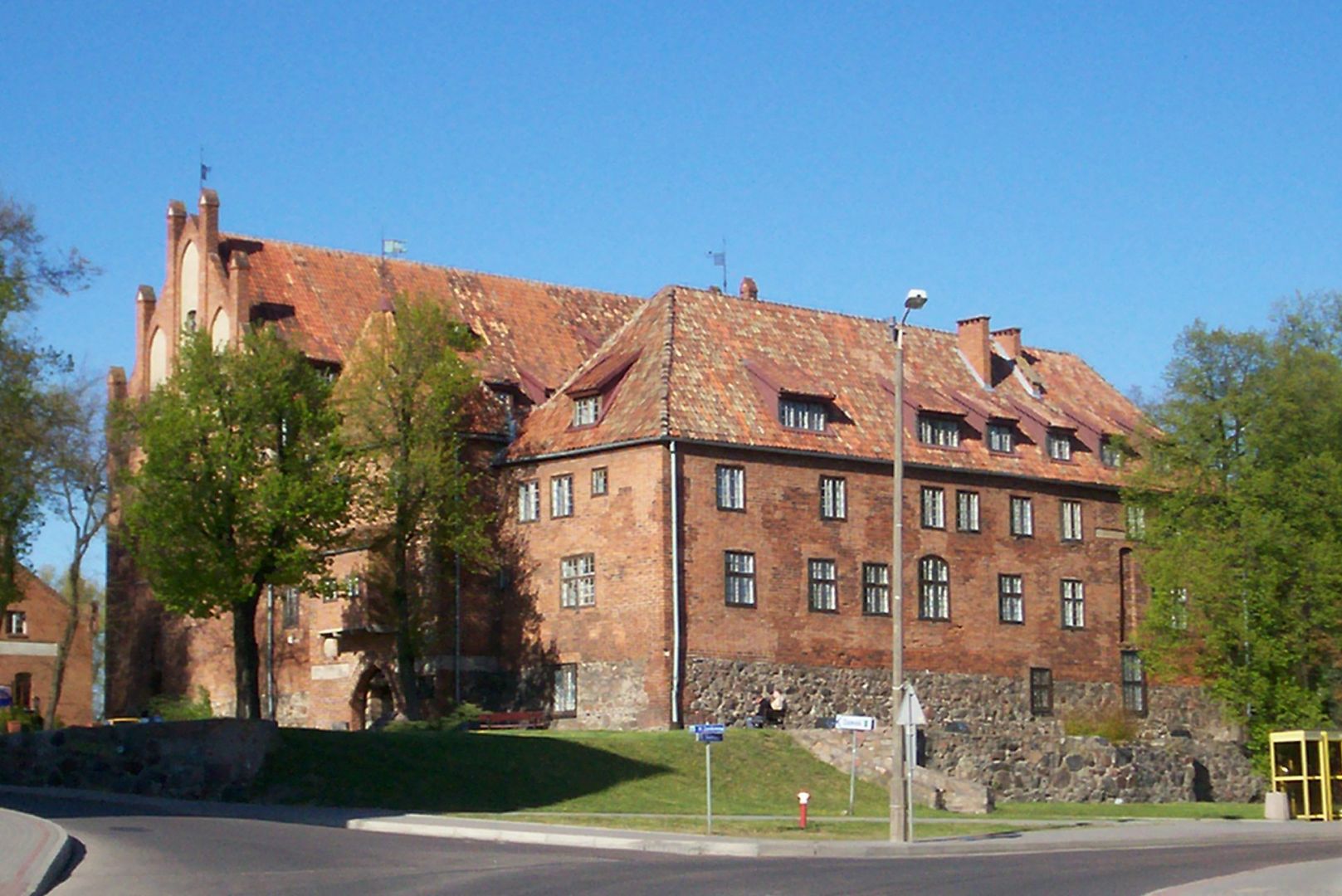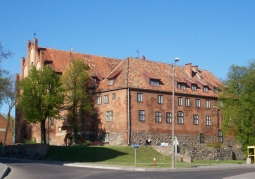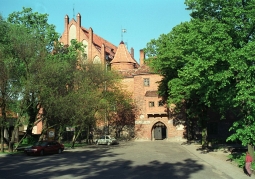No weather data
0.0 /5
Number of ratings: 0
Address: plac Zamkowy 1 , 11-400 Kętrzyn
Gothic building from the second half of the 14th century, located on the Gothic Castles Trail. Originally, the castle was a three-winged building, built around a courtyard, on a square plan. It was surrounded by a defensive wall with three towers and an entrance gate from the city. In the northern wing there was a refectory, a chapel and apartments of a Teutonic official - the prosecutor. The castle and the farm adjoining it housed, among others: kitchen, brewery, mill, bakery, granary, pantry, armory, powder magazine, chapel and prison. In Prussian times, there was already a settlement in these areas called Rast, of which we have the first mention from 1329. Initially, a timber and earth watchtower stood on the newly conquered territory. Many such watchtowers were created in the first phase of the Order's presence in Prussia. At the beginning of its existence, Teutonic strongholds served to protect the area already acquired and constituted the basis for further expansion to the east. Of these, settlements were organized in the area. A prosecutor's office was established in Kętrzyn, which was subordinated to the commandery in Balga, with a short break when the commandery in Ryn operated. The first wooden and earth stronghold was invaded twice by the Lithuanian army of princes Olgierd and Kiejstut in the years 1345 and 1348. The brick castle was erected from the mid-fourteenth century. At a similar time, the city received a city privilege from commander Balga Hennig Schindenkopf in 1357. The castle was built between 1360 and 1374 near an earlier wooden watchtower. It was intended as the headquarters of the Teutonic prosecutor. It was characterized by moderate defensive qualities and a modest utility program - around 1410 the castle arsenal consisted of seven cannons for stone bullets and a small amount of small arms and crossbows. [1] In 1410, the Prussian knight Johart and the mayor Hermann Barddyne surrendered the city and the castle to the Polish army of Władysław Jagiełło, but the following year the castle returned to the Order. At the beginning of the 15th century, the castle was surrounded by an additional defensive wall 2 meters wide. In 1454, after the outbreak of the Thirteen Years' War, the rebellious inhabitants of Kętrzyn captured the castle and drowned the Teutonic prosecutor, Wolfgang Sauer, in a pond. However, the order managed to recapture the castle in 1461, and the shoemakers' guild was punished by the inability to sit on its city council, the ban continued until the reign of Albrecht Hohenzollern as Prince of Prussia. Then they handed the castle over to the Polish army, which owned it until 1461. After the secularization of Prussia, the castle became the seat of the starosta and soon, in 1528-1529, it was rebuilt. There was also a number of works aimed at adapting the castle to new functions. As a result, for example, a second gate and bay window above the main gate from 1528. Another reconstruction took place in the years 1559-1566. In 1622, a small cylindrical staircase was erected in the courtyard. Some interior work has also been done, including rib vaults in the kitchen and brewery. Through a second reconstruction from the 17th century, the medieval expression of the building was strongly interrupted by dismantling the upper floors of the north wing along with decorative gables, making all 3 wings level. Demolition of external fortifications began in the first half of the 18th century. On December 15, 1797 a fire broke out in the castle, which destroyed part of the building. In the years 1911-1912 the city bought the object, allocating part of the rooms for apartments, which artificially arrived in the walls of rectangular windows. At the same time, the office of the German 3rd Infantry Brigade was also located here. At the end of the 1930s, minor conservation works were carried out in the castle. Before World War II, there was a financial office and housing for officials. In the early 1940s, the western part of the basement under the north wing was rebuilt for the purpose of an anti-aircraft shelter. At the end of January 1945, Soviet troops occupied the city and burned most of the Old Town buildings and the castle. The castle was rebuilt in 1964-1966 thanks to the efforts of the Provincial Conservator of Monuments in Olsztyn from the funds of the Ministry of Culture and Art. Its gothic character was restored by raising the roofs, southern and eastern wings and adding one floor with gothic gables and a sloping roof in the north wing. However, the pre-war shape was no longer referred to, but it was regothized, referring to its appearance from the reign of Albrecht Hohenzollern. The drawings and documentation created by Conrad Steinbrecht were used. The north wing was rebuilt in its original height and gothic decorative gables were restored. Currently inside the castle there is the City Library and the Regional Museum. Wojciech Kętrzyński, and in the basement of the north wing there is a knighthood. The museum's collections include a collection of paintings, sculptures and antique furniture from the 15th to 19th century.
Komentarze
No results
Nearby places
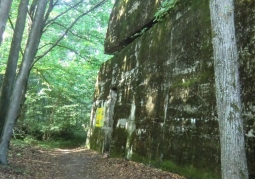
Hitler's headquarters Wolf's Lair - Gierłoż
Category: Defensive Fortifications and CastlesIn the heart of Mazury there are forest ruins of the headquarters of Adolf Hitler. A masked town in the forest - 200 buildings: shelters, barracks, 2 airports, power plant, railway station, air-conditioning equipment,...
8 km
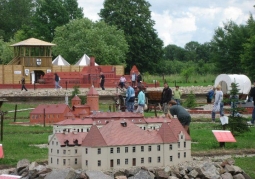
Mazurolandia - Masurian Park of Attractions - Parcz
Category: Science and entertainment parksMazurolandia is a park of attractions located in Masuria in Gierłoż near Kętrzyn. We combine great fun with exploring the monuments, culture and history of the Warmian-Masurian region. This is the only place where...
9 km
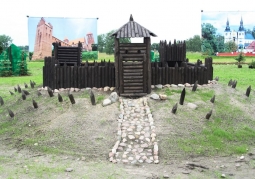
Miniature Park of Warmia and Mazury - Mazurolandia - Masurian Park of Attractions - Parcz
Category: Science and entertainment parksThe Park of Miniatures of Warmia and Mazury called '' Mazurolandia '' presents meticulously recreated miniatures of the most interesting and well-known monuments of the Warmian-Masurian region. These objects delight...
9 km
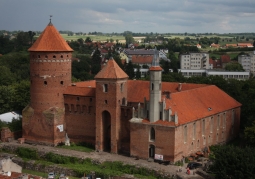
Castle of Warmian Bishops - Reszel
Category: LocksThe castle is located in the picturesque town of Reszel, 70 km north-east of Olsztyn, which formally belonged to the Warmian bishops, but the Teutonic Knights left it only in 1300. The construction of the castle lasted...
16 km
Phone
89 752 32 82
Godziny otwarcia
in the tourist season 01.06-30.09: Monday - museum closed Tuesday - Friday 9.00-18.00 Saturday - Sunday 10.00-19.00 off season 01.10-31.05: Monday - museum closed Tuesday - Sunday 9.00-17.00
Service prices
Normal ticket - PLN 6, reduced ticket - PLN 4 Groups over 20 people - PLN 4 Tuesdays - free admission
Nearby places

Hitler's headquarters Wolf's Lair - Gierłoż
Category: Defensive Fortifications and CastlesIn the heart of Mazury there are forest ruins of the headquarters of Adolf Hitler. A masked town in the forest - 200 buildings: shelters, barracks, 2 airports, power plant, railway station, air-conditioning equipment,...
8 km

Mazurolandia - Masurian Park of Attractions - Parcz
Category: Science and entertainment parksMazurolandia is a park of attractions located in Masuria in Gierłoż near Kętrzyn. We combine great fun with exploring the monuments, culture and history of the Warmian-Masurian region. This is the only place where...
9 km

Miniature Park of Warmia and Mazury - Mazurolandia - Masurian Park of Attractions - Parcz
Category: Science and entertainment parksThe Park of Miniatures of Warmia and Mazury called '' Mazurolandia '' presents meticulously recreated miniatures of the most interesting and well-known monuments of the Warmian-Masurian region. These objects delight...
9 km

Castle of Warmian Bishops - Reszel
Category: LocksThe castle is located in the picturesque town of Reszel, 70 km north-east of Olsztyn, which formally belonged to the Warmian bishops, but the Teutonic Knights left it only in 1300. The construction of the castle lasted...
16 km
